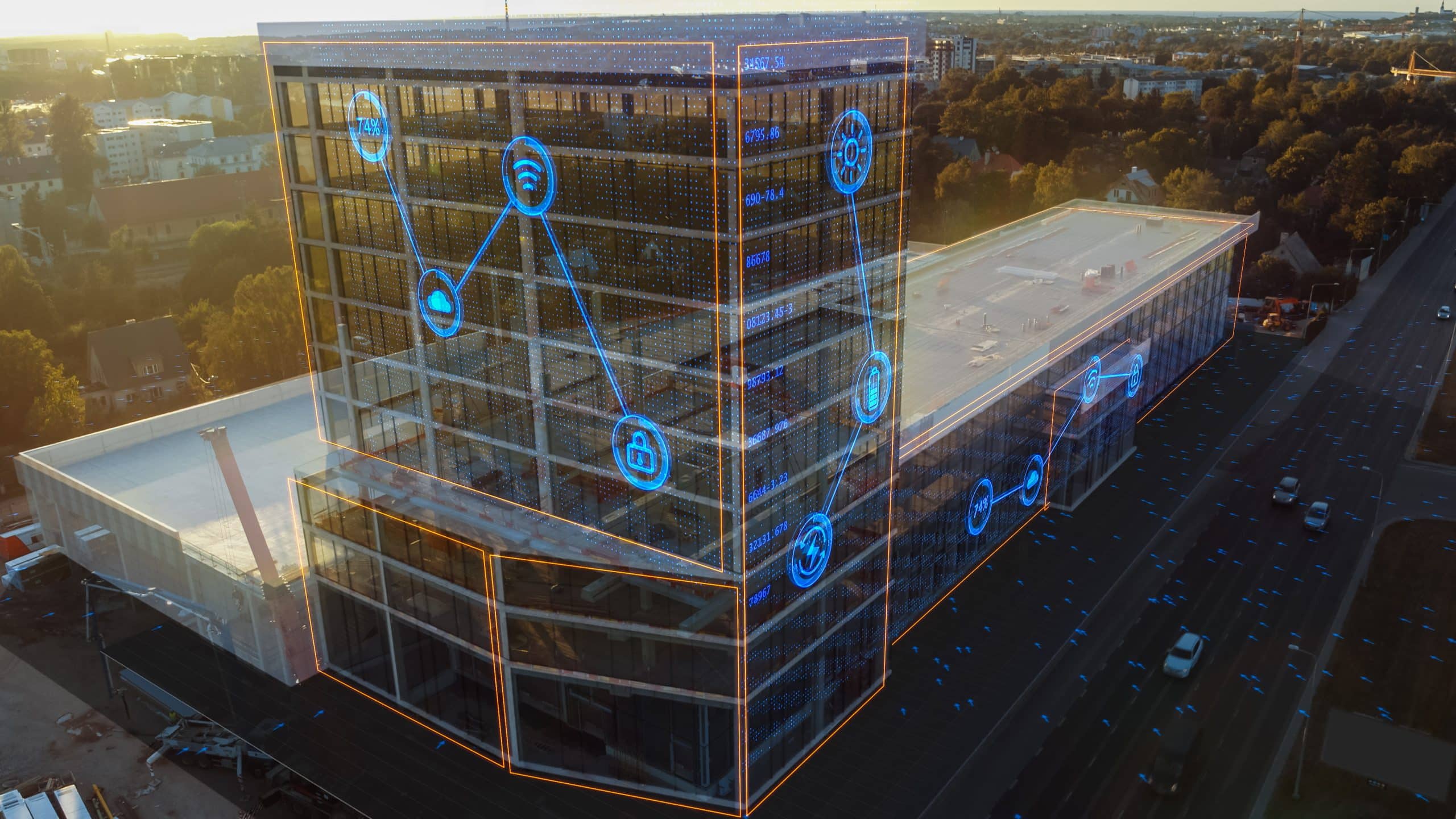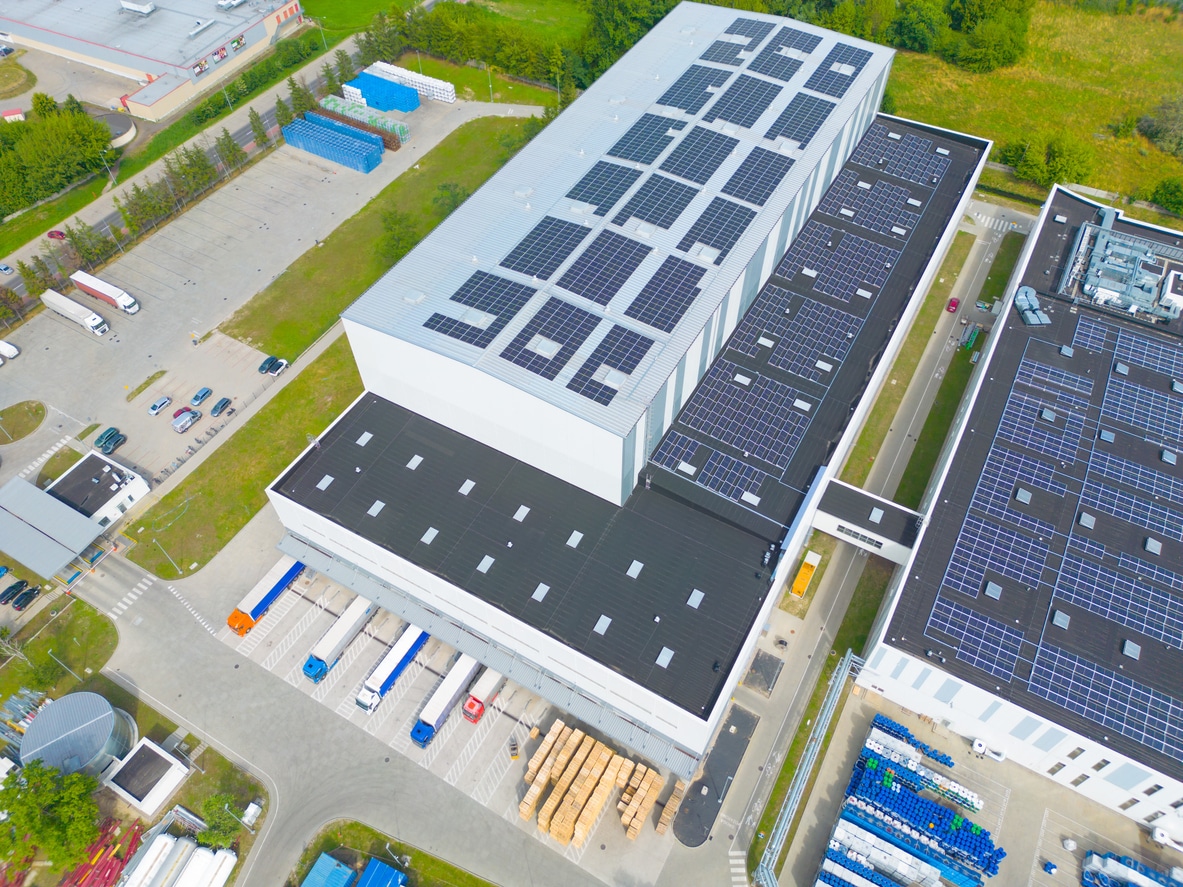Reflecting on a Year of Sustainable Commercial Construction: Trends and Innovations for 2026 Construction trends…

Smart Buildings: Integrating Technology for Energy Efficiency
Smart buildings harness technology to optimize energy efficiency and streamline operations in today’s commercial real estate market. By integrating automated systems, data analytics, and intelligent controls, property owners can reduce utility costs and meet sustainability goals while maximizing comfort.
Schonsheck designs and implements smart building solutions that align with LEED and WELL standards while delivering measurable savings. Let’s take a look at how we’re using the latest in smart tech and the IoT to bring commercial spaces to the next level.
Core Smart Technologies in Commercial Buildings
Automated HVAC Controls
Advanced HVAC controls use occupancy sensors, schedule‑based setbacks, and demand‑controlled ventilation to adjust temperature and airflow in real time. When rooms are unoccupied, the system reduces heating and cooling output. As people enter, it brings the environment back to comfort levels efficiently. Integration with building management systems allows remote monitoring and automatic fault detection, preventing energy waste from malfunctioning equipment.
Intelligent Lighting Systems
LED lighting paired with smart controls like motion sensors, daylight harvesting, and programmable schedules can cut lighting energy use by more than half. Sensors detect ambient light and dim or turn off fixtures when natural daylight is sufficient. Occupancy sensors switch lights on only where needed. Centralized controls enable facility managers to set lighting scenes, track fixture performance, and generate reports on usage patterns for ongoing optimization.
Advanced Metering Infrastructure
AMI networks collect real‑time electricity, gas, and even water usage data from smart meters installed throughout a building. This granular data feeds into analytics platforms to identify consumption trends, detect leaks or equipment faults, and benchmark performance across multiple facilities. Automated meter readings eliminate manual reads and reduce billing errors. With precise usage insights, building owners can target high‑consumption areas for retrofit projects and verify the impact of efficiency upgrades over time.
Data Analytics and AI for Operational Optimization
Predictive Maintenance via IoT Sensors
IoT sensors embedded in mechanical equipment, electrical panels, and lighting fixtures collect continuous performance data such as vibration levels, temperature readings, and power draw.
Machine learning models analyze these streams to identify early signs of wear, lubrication issues, or calibration drift before they trigger failures. By flagging anomalies weeks or months in advance, maintenance teams can schedule repairs during off‑peak hours and avoid costly emergency shutdowns.
Historical data also helps refine maintenance intervals based on actual usage rather than manufacturer estimates. Over time, this data‑driven approach prolongs asset life, reduces spare parts inventory, and frees up budget for strategic upgrades.
Energy Usage Pattern Analysis
Smart meters and submeters deliver granular energy, gas, and water consumption data for individual floors or tenant spaces. AI platforms process this information to uncover inefficiencies such as HVAC units running at night, uncontrolled lighting in unoccupied areas, or unbalanced load distribution. Visual dashboards highlight demand peaks and suggest load‑shifting strategies, such as pre‑cooling during off‑peak hours to reduce peak‑time electricity costs.
Trend analysis can also detect slow equipment degradation, prompting proactive component swaps that maintain system performance. By benchmarking against similar buildings and historical baselines, facility managers can quantify savings from efficiency projects, validate payback periods, and secure executive buy‑in for further investments.
Integration Strategies and Interoperability
Open-Protocol Platforms
Open‑protocol standards such as BACnet and LonWorks allow devices from multiple vendors to share information on a common network without proprietary barriers. This flexibility gives building owners the freedom to select best‑in‑class sensors, actuators, and control panels while avoiding vendor lock‑in. During system design, our engineers map out network topologies that connect HVAC controllers, lighting modules, and energy meters on a unified bus.
This approach simplifies future upgrades and expansions, reduces installation costs by using existing cabling, and ensures that any new component can be integrated smoothly as technology evolves.
Unified Dashboards and Controls
A centralized management interface brings together data from disparate systems into one coherent view. Facility managers can monitor real‑time energy metrics, receive threshold alerts, and launch corrective actions with a single click. Role‑based access grants customized views and reports to operations staff, executives, and sustainability teams.
Integrated controls enable scenario management, such as setting global lighting presets for after‑hours security or triggering pre‑cool cycles on hot days. Historical data archives support regulatory reporting and certification processes. By consolidating control and data visualization, unified dashboards improve decision making, speed troubleshooting, and deliver consistent performance across multiple properties.
Renewable Energy and Storage Coordination
Integrating on‑site renewable energy sources such as solar panels with your building automation system maximizes self‑consumption and reduces reliance on grid power. Smart controllers monitor real‑time solar output and adjust building loads accordingly. For example, HVAC systems can increase cooling when solar generation peaks, using free energy rather than drawing from the utility.
Battery storage adds another layer of flexibility. When electricity rates are low or solar output is high, the building management system charges batteries. During peak‑rate periods or grid curtailment events, stored energy powers critical equipment. This load shifting lowers operating costs and shields your business from volatile energy markets.
Coordinating renewables and storage also supports sustainability goals. Detailed analytics show how much clean energy your building uses versus grid power. This transparency helps you track carbon reductions and demonstrate environmental leadership to tenants, investors, and regulators.
Partner with Schonscheck for All Your Smart Building Projects
Our LEED and WELL-accredited professionals work from initial feasibility studies through system commissioning and ongoing optimization. We select open‑protocol platforms, integrate best‑in‑class hardware, and develop unified dashboards that align with your operational objectives. With local support throughout Michigan, we ensure on‑time delivery, code compliance, and seamless interoperability that future‑proofs your investment.
Work with a Michigan Leader in Smart Building Automation
Ready to boost energy efficiency and operational performance with smart building technology? Schonsheck delivers comprehensive smart building automation solutions tailored to your facility. From automated HVAC and lighting controls to AI‑driven analytics and unified dashboards, our licensed experts guide you through every step.
Contact us online or call us at (248) 669-8800 to schedule your consultation for integrating smart building technology in your commercial space.




